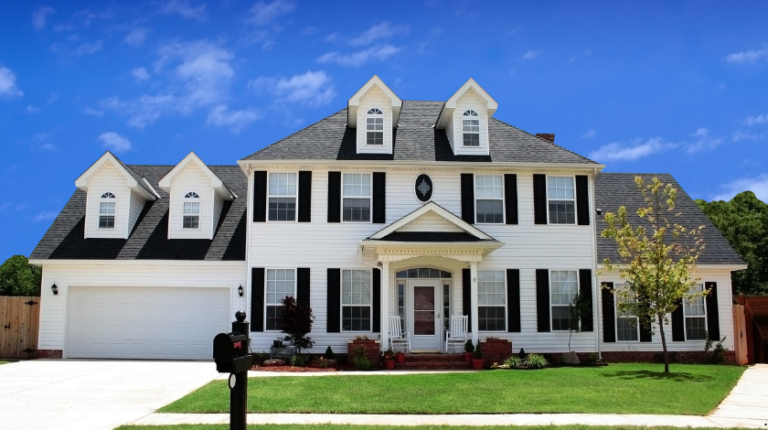Moving into a new home is the perfect time to rethink how you can be kinder to the planet. Going green doesn’t have to be complicated, and setting up your home in an eco-friendly way is a great first step. It’s about making smart choices that reduce waste and also save you money. Plus, it feels good knowing you’re doing something positive for the environment while making your home more efficient and comfortable.
Whether you’re a hardcore eco-warrior or just dipping your toes into the world of sustainability, turning your new home into a green haven can be fun and practical. Think of it as a chance to not just decorate your space but to make it work better for you and the planet. From cutting energy use to conserving water, there are so many simple changes you can make that really add up.
Let’s jump into some fun, easy ways to go green in your new home.
-
Sustainable Moving
Your eco-friendly journey can actually start before you even move into your new place. Partnering with a moving company is a great way to make sure your move leaves a lighter footprint. Handling the move yourself can lead to wastage and higher fuel costs as you might not have the moving trucks to transport everything at once. Choosing a local company also means shorter travel distances, which reduces fuel use and helps cut down on the carbon impact of your move.
Going local isn’t just about reducing emissions—it’s also about supporting businesses in your community. A local moving company can often give you a more personalized experience, helping you move smoothly and efficiently while keeping things green. Plus, when you’re done, you won’t be left with mountains of waste, thanks to their eco-friendly options.
-
Energy-Efficient Appliances and Lighting
Once you’re in your new home, one of the best ways to make it eco-friendly is to upgrade your appliances. Old appliances use way more energy than newer, energy-efficient models, which means they’re not just bad for the environment—they’re bad for your wallet, too. Swapping out that old refrigerator or washing machine for an Energy Star-certified one can help you cut down on electricity use without sacrificing performance. It’s like giving your home a little power boost so it works smarter, not harder.
And don’t forget about lighting. Switching to LED bulbs is one of the easiest ways to cut energy use. LED bulbs last longer and use less electricity than traditional incandescent bulbs, making them a simple, cost-effective choice for every room in your home. Since they come in all sorts of styles now, you can still have that cozy glow without wasting energy. Bright idea, right?
-
Water Conservation Systems
Water conservation is another key part of creating an eco-friendly home. You don’t have to go overboard, though. Installing low-flow showerheads and faucets is a simple way to cut down on water use while still enjoying your morning shower. Upgrading to water-efficient toilets can save gallons of water every day without you even noticing.
If you’re feeling extra green, consider setting up a rainwater harvesting system. Collecting rainwater to use for things like watering plants or washing your car can cut down on your water bill and help you use resources that would otherwise go to waste. It’s a practical, easy way to be more sustainable, and you might even find it fun to see how much rainwater you can collect.
-
Smart Thermostats and Home Automation
Want to make your home feel like it’s from the future while also cutting down on energy use? Smart thermostats are the way to go. These nifty gadgets let you control your home’s temperature from your phone, making it super easy to save energy when you’re not at home. Some even learn your schedule and adjust the temperature automatically. That means your house stays comfortable without you having to constantly adjust the thermostat. Besides, less wasted energy means smaller utility bills—score.
Home automation doesn’t stop at thermostats, though. You can get smart lights that turn off when you leave the room or smart blinds that close when it gets too hot outside. It’s all about making your humble abode work for you in a smarter, more eco-friendly way. Less energy wasted, more convenience for you.
-
Eco-Friendly Building Materials
Let’s talk about what your home is made of and what’s inside it. If you’re planning any upgrades or renovations, consider using eco-friendly materials like bamboo, reclaimed wood, or recycled metals. These materials not only look great, but they’re also a lot kinder to the environment compared to traditional options. Bamboo, for example, grows quickly and doesn’t require replanting, making it a super sustainable choice for flooring or furniture.
And when it comes to furniture, think long-term. Investing in durable, sustainable pieces made from non-toxic materials is not only better for the environment but also for your health. Avoid fast furniture that’s cheaply made and won’t last. Instead, choose items that are built to stand the test of time. Less waste, fewer toxins, and more style for your new home – sounds like a pretty sweet deal, right?
-
Solar Panels and Renewable Energy
If you’re ready to go green, installing solar panels is one of the biggest, most impactful changes you can make. Solar panels harness the sun’s energy to power your home, reducing your reliance on fossil fuels and slashing your electricity bills. What’s best is that many areas offer incentives or tax breaks for installing solar, making it an even smarter investment in the long run.
Renewable energy options don’t stop with solar panels, either. Depending on where you live, you might be able to sign up for a green energy plan that supplies your home with electricity from renewable sources like wind or hydropower. It’s a simple switch that can make a huge difference for the environment, helping you live more sustainably without changing your daily routine.
Making your new home eco-friendly doesn’t have to be complicated or expensive. Whether you’re upgrading appliances, switching to smart home tech, or investing in renewable energy, there are plenty of simple ways to reduce your environmental footprint. It’s all about making thoughtful choices that save energy, cut down on waste, and create a healthier home for you and the planet. So, as you settle into your new place, why not go green and turn your house into an eco-friendly oasis? You’ll feel good about it—and so will the Earth.
Brit is a passionate writer with a love for storytelling and exploring the depth of human experience through words. With a keen eye for detail and a thoughtful voice, Brit crafts pieces that resonate with readers and spark meaningful reflection. When not writing, Brit enjoys quiet moments with a good book, long walks, and finding inspiration in everyday life.






